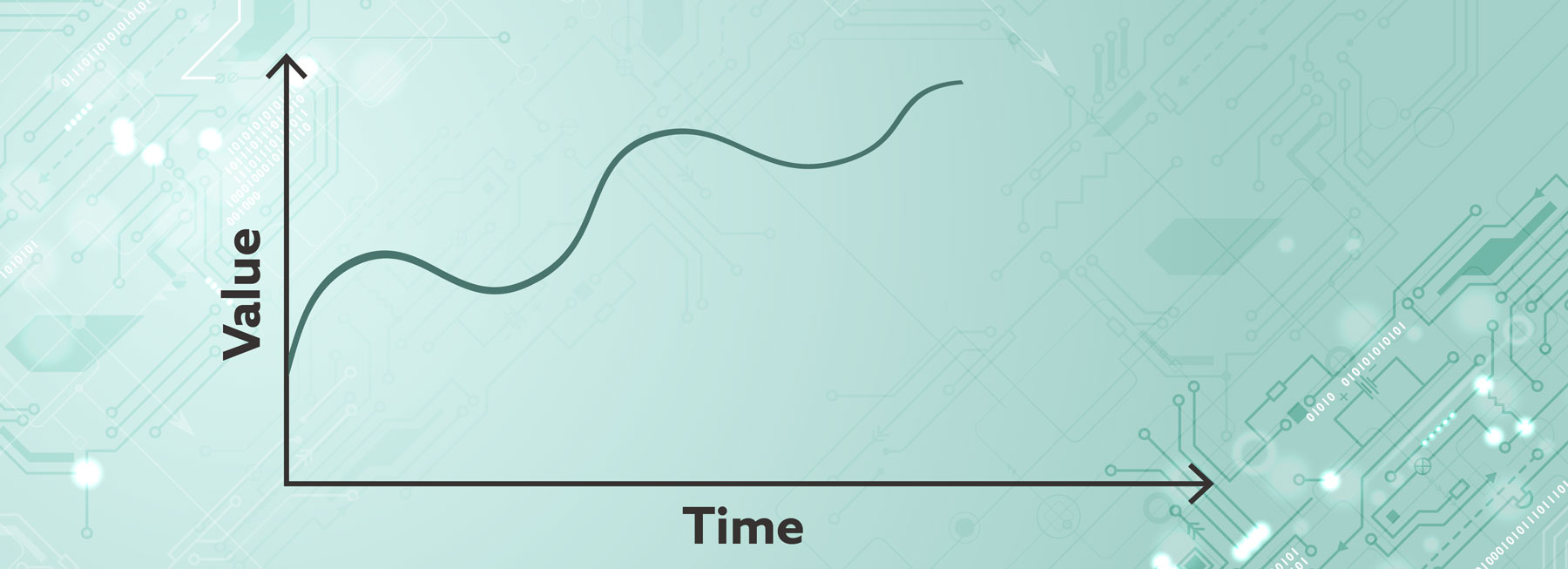
The inconvenient truth about business-critical software (in two graphs)
Mattias Vos - November 22, 2022

Here’s a graph that reveals an inconvenient truth.
Recognize it? You probably do if you’re familiar with business-critical software. The curve traces the evolution of the value a business might pick up from this kind of software application over time. Too often, it can be like a bumpy road with all its ups and downs but, unfortunately, the downs tend to be bigger than the ups.
Let me explain what triggers this phenomenon and how visionary organizations can bend the curve skyward.
Stage 1: The honeymoon
Blog post

Stage 1 could be called the honeymoon period. It represents the initial months following implementation. Keep in mind that we’re not talking about simple desktop applications but about multi-layered IT systems designed to support decision-making in highly complex business environments. The early upward trend is due to several factors:
- Users who followed the intensive training program at the end of the implementation stage are gaining experience with the solution.
- Master data is being cleansed.
- The continuous improvement track successfully scoops up the low-hanging fruit.
Blog post
Stage 2: In a rut
Blog post
But once the honeymoon is over, a number of things happen that negatively impact how well this system mastery progresses. In stage 2, your marriage gets stuck in a rut:
- Some key users get promoted to other functions within the supply chain organization or elsewhere.
- Some users leave the organization to be replaced by rookies who will not have received the initial training. As post-implementation assistance makes way for a less intensive service of on-call support, these novices are usually trained on the job by their peers.
- Documentation is incomplete, too complex, or not utilized to its full potential, for various reasons, but mainly because there’s nobody in the organization who’s taken ownership of it. It also means that continuous improvement efforts slow down.
- Anomalies creep into the master data.
- Market dynamics require the organization to adapt, but the business changes are not implemented in the software.

Blog post
Stage 3: In counseling
Blog post

This evolution may slow down, and much of it happens under the radar without anyone really noticing. But the effects become apparent after a while, and this may encourage business leaders to order a survey. Let’s call this the counseling stage. The survey might indicate that the software is being used at a level way below its capabilities.
Blog post
Stage 4: Revival (with limited effect)
Blog post
This is the point where management decides to take action and re-energize the application. The remediation may involve organizing key-user and end-user training, tweaking the configuration and master data to meet the requirements arising from the survey, and updating some of the documentation.
Sadly, more often than not, the survey conducted earlier proves to have been a bit superficial, giving only a very fragmented view of the situation and failing to pinpoint the real reasons why the software is not utilized to its full potential. Which is why this flare-up re-energization doesn’t completely make up for the previous loss in value. A few years later, the same problems are back, and sometimes even worse.

Blog post
Fighting for a continuous knowledge retention and development budget
Blog post

The persistence of the flare-up approach may be due to budgetary policy, but it’s a pity. I’ve seen a lot of organizations where managers find it easier to secure a substantial training and documentation budget within the framework of a one-time flagship implementation than for building and maintaining a competence center to keep the application running smoothly. It’s also essential that the software provider continue to offer enough high-quality assistancetailored to company needs.
Blog post
I recommend managers to both fight for this long-term budget and challenge their software provider. Good knowledge management demands continuous effort from both sides. It also involves proactive succession planning and smart collaborative programs of refresher and upgrade trainings, documentation reviews, and internal or external audits. There’s no free lunch, but if you can maintain a strong competence center, the graph will probably look more like this:

While efficiency will still decline if key users leave the organization, the continuous effort to secure complete knowledge retention and development and maintain strong governance will achieve a positive trend in the long run. You could call it a happy marriage.
Want to learn how you can secure knowledge management and development within your supply chain organization?

Mattias Vos
Team Manager User Engagement at OMP BE
Biography
Mattias has worked with supply chain technology for more than a decade. He has always been interested in the art of user onboarding and has valuable experience in the requirements for proper tool adoption.




